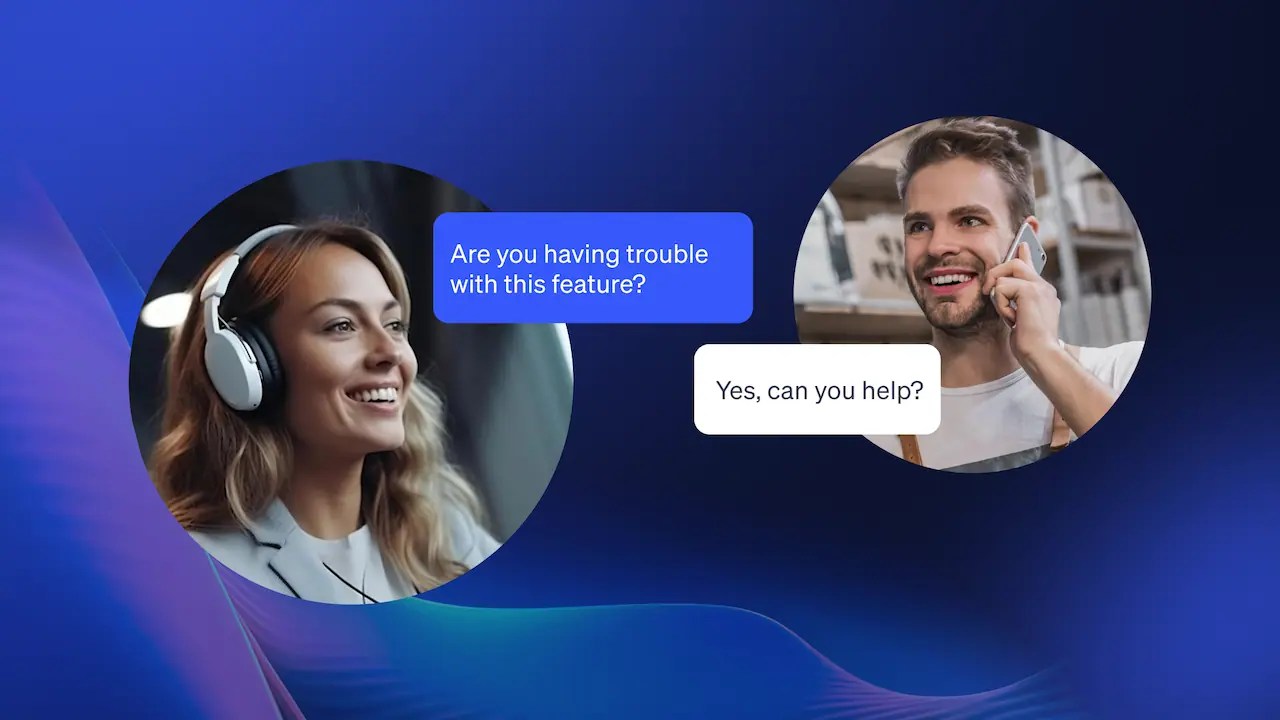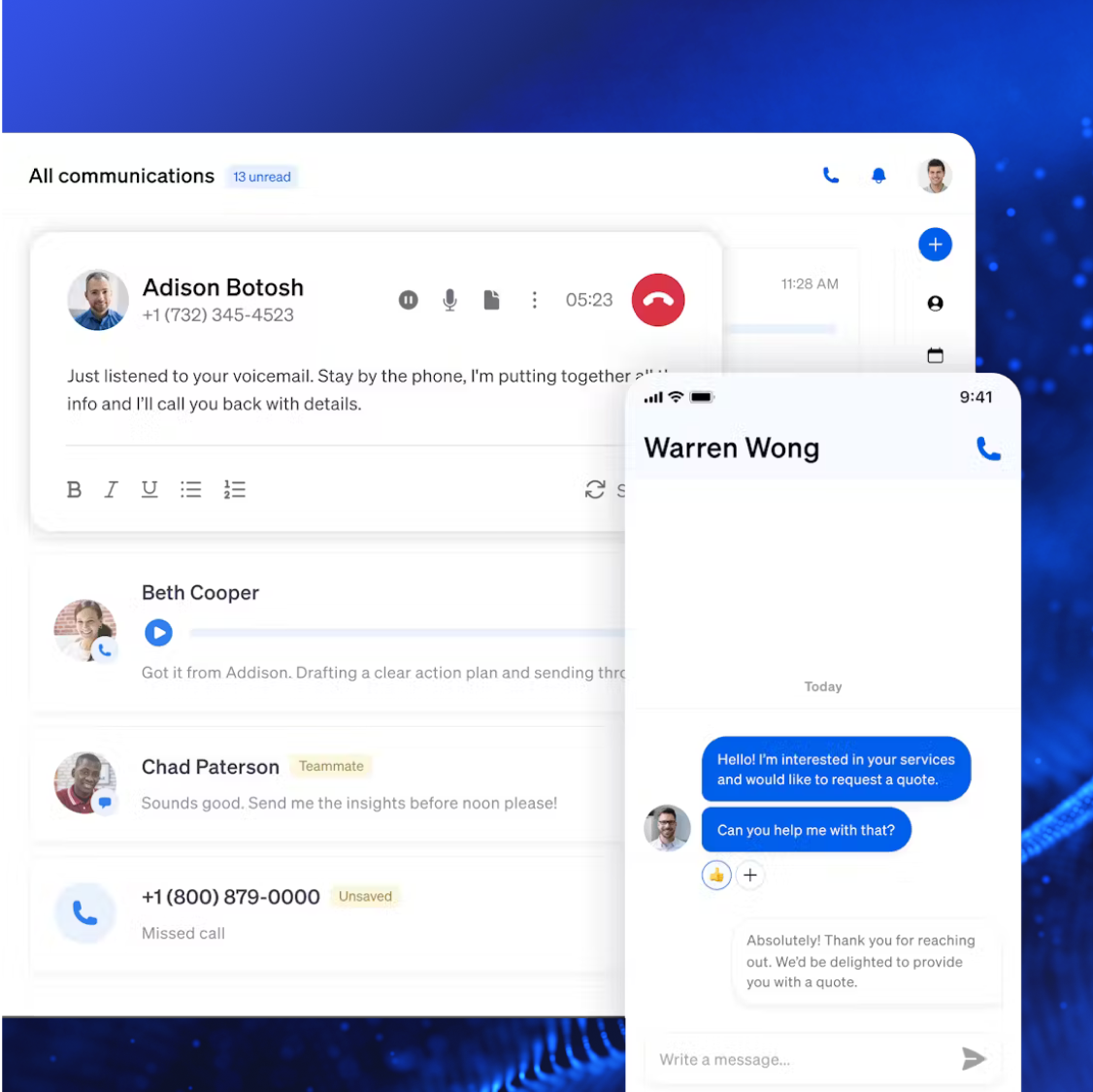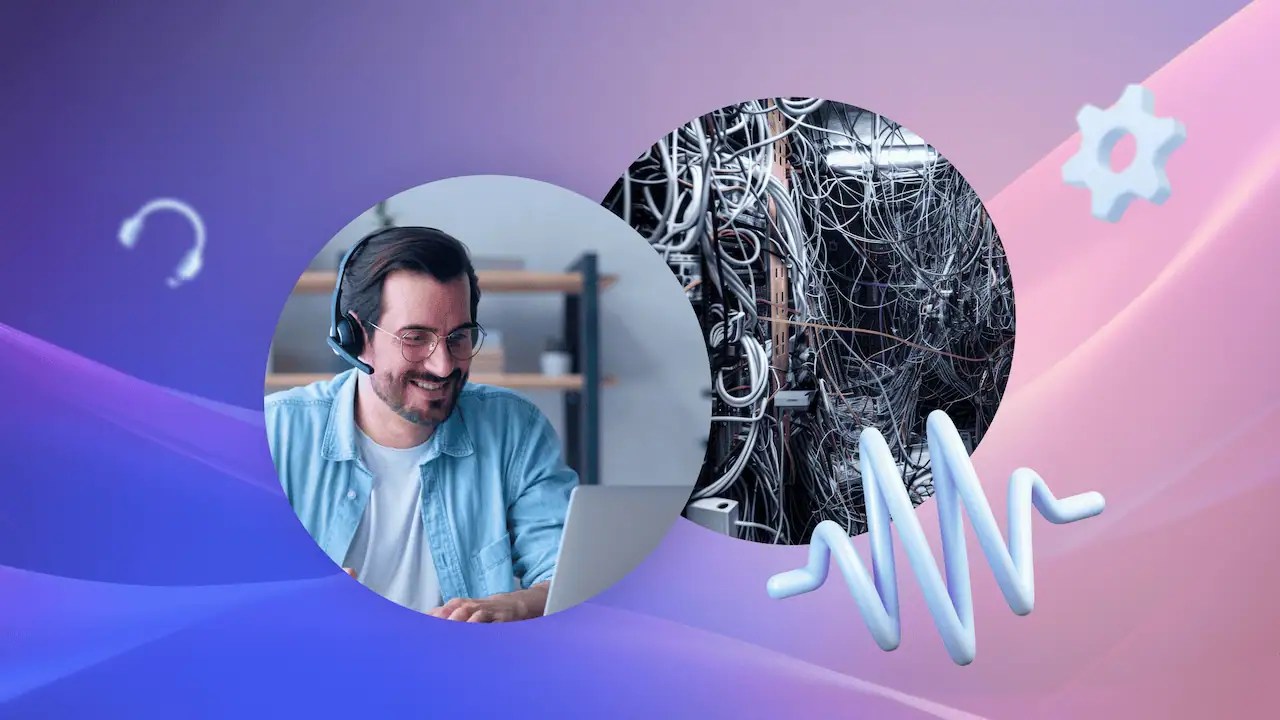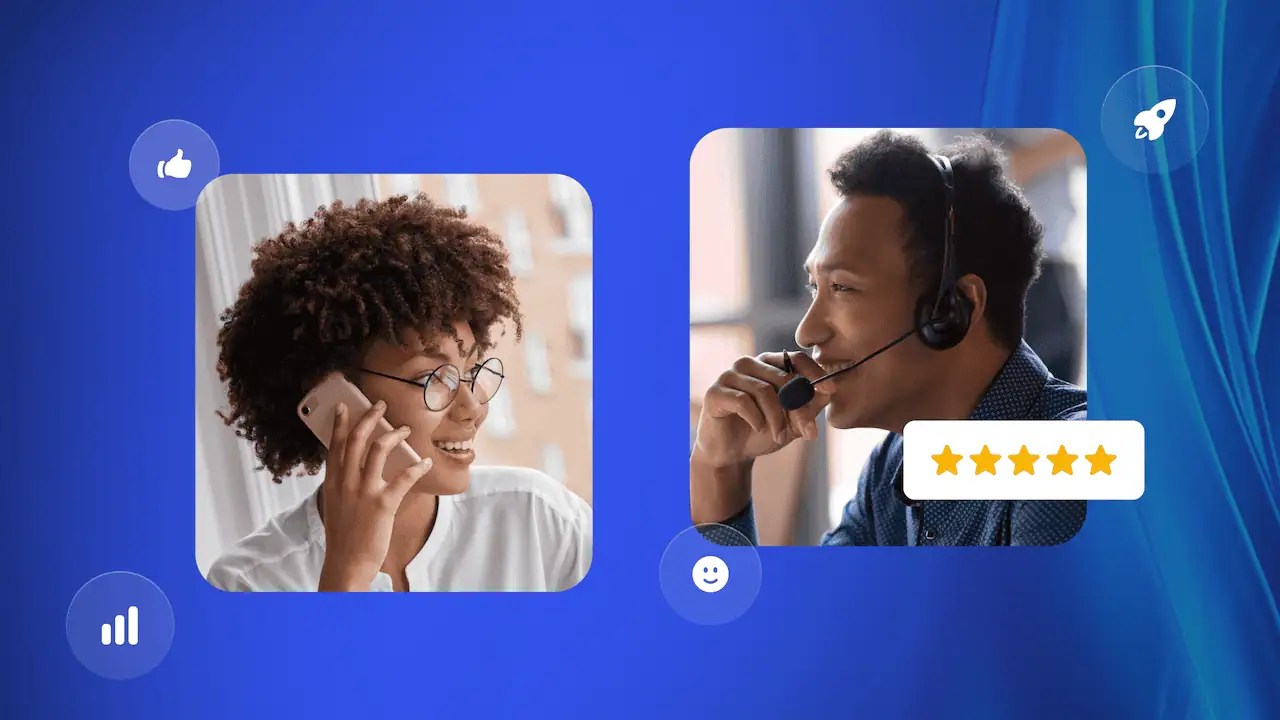Contact centers serve many purposes for businesses large and small. As such, they must be flexible, secure, and packed full of functionality.
This puts pressure on the design, deployment, and contact center architecture compared to the stand-alone call center modules of yesteryear.
The contact center is arguably the most important part of any customer-facing operation. It is the central hub for customer information, call handling, and post-call analysis.
In this guide, we walk you through the ins and outs of contact center architecture, from the first point of customer contact to that call becoming a data point on your dashboard and everything in between.
Let’s start at the beginning of the process.
How Information Flows Within a Contact Center
While it may seem like there’s only a single interface for updating customer records, there’s a lot going on beneath the surface.
The first thing to explore is what happens when a customer contacts you.
Omnichannel intake
Agents handle more than just phone calls. Customer inquiries come through various channels, like:
- Voice calls
- Emails
- Web chats
- Social media messages
- SMS
We refer to the handling of these multiple channels as omnichannel.

In the world of cloud contact centers, the term contact center as a service (CCaaS) is synonymous with omnichannel. Each CCaaS tool is built to route each interaction to the appropriate queue based on predefined rules (e.g., urgency, topic).
Regardless of which channel a customer contacts you on, there are workflows using pre-configured conditions and agent skills working to streamline the customer journey.
Thanks to features like skills-based routing workforce management (WFM), your call center architecture can ensure that every inbound interaction reaches the most suitable agent in the shortest time possible.
- Skills-based routing: Matches agent abilities to the types of customer inquiries.
- WFM: Ensures enough agents are available based on historical data.
Customer data integration
When an agent picks up the phone or answers a web chat, your contact center could be making an API call to another system you’ve connected it to.
In fact, your systems are working in tandem before the call connects. They’re working behind the scenes to ensure agents get all the information they need when they’re ready to answer.
The most common contact center integration happens with a customer relationship management (CRM) system.

To provide a personalized service, this integration of systems ensures a real-time exchange of information. Once connected, data is shared between the apps and displays relevant information like:
- Caller ID
- Company name
- Person of contact from that company
Then, once contact is established, further information can be displayed to an agent, like:
- Recent tickets
- Recent purchases
- Channel preferences
- Historical complaints
When you know which type of contact center integrations suit your business needs, you have the choice of using a built-in integration (available with most contact center software) or building your own.
There are pros and cons to each. Here are the six key factors to consider when making this decision.
| Factors to Consider | Third-Party | Custom-Built |
|---|---|---|
| Cost | Predictable subscription fee | High initial development costs |
| Time to deploy | Ready to go out of the box | Factor in development time |
| Customization and flexibility | Limited customization | Build and change in line with bespoke requirements |
| Support and maintenance | Included in cost | Needs internal or contracted resource |
| Scalability | Limited by partner | Build and change in line with bespoke requirements |
| Security | Dependent on partner | Build and change in line with bespoke requirements |
Other key integrations include:
- Knowledge management systems
- Payment processing
- Billing platforms
- Social media
- HR systems
Agent information access
Once a customer interaction is underway, it’s crucial for agents to have access to all relevant customer data (past touchpoints, account details, etc.) to make informed decisions.
User-friendly interfaces combined with slick information retrieval (both internally and via integration with other systems) make search and retrieval easy. The output is a smooth transaction and an efficient remedy to your customers’ queries.
This means needing only a single platform to recall messages, emails, and call recordings and a unified platform with non-contact-center agents like subject matter experts and product managers.
When customers require complex technical help and agents need to consult with back-end support staff, seamless access to the rest of your business is as crucial as access to customer information.

Real-time data exchange
Information flows between different components work beneath the surface to provide these interactions during the exchange.
For example, call recordings are automatically linked to chat transcripts for a complete picture. Rather than seeing that a call recording is available for a customer’s last call, agents can search the recording database for keywords and phrases. This makes manual review processes more efficient and leads to faster handling times.

Likewise, if a caller opts to exit a web chat and calls a human, the agent who answers the call is immediately presented with the chat history. There’s no need to ask for a recap when your contact center architecture takes care of all this for you.
Post-interaction analysis
Following the resolution of a customer query, data from all interactions is stored for post-call surveys, agent performance evaluations, and trend identification.
You can use these for quality assurance or agent training, or you might need to hold data and recordings for compliance reasons.
If you need to recall an interaction, you can search your contact center database for a customer record, date or time stamp, or keyword.
Working as an agent-friendly front end and a secure and searchable back end, your contact center becomes the most important tool in your business.

The Inner Workings of Contact Center Technology
Think of a contact center as a car. It’s a sum of all its parts.
If you buy a new Ford, you’re not just getting “a car”; you’re getting an engine, wheels, seats, a gearbox, etc. All these components come together to present the experience you desire.
Learn how we upgraded our traditional call center to a modern AI-powered enterprise contact center solution.
Read case study →
Here are the key features that make up modern-day contact center architecture.
Automatic call distribution
Automatic call distribution (ACD) routes incoming calls to available agents based on preset criteria like skill set, workload, and call type.
You can distribute calls based on caller ID, business hours, support level, and interactive voice response (IVR) selections. As a result, inbound calls reach the right agent or department quickly and without the caller having to dial a different phone number.
Imagine a customer calling about a specific appliance at a big-box store. ACD can identify keywords and route the call to an agent familiar with that product line, ensuring expert assistance on the first try.
IVR
An IVR uses pre-recorded messages and menus to automate tasks, like routing calls, collecting basic information, and directing customers to self-service options.
By choosing the right option, callers get matched with the correct department, individual, or queue.
Inside an IVR, you can configure special rules for who picks up each call based on skills, call volume, or time.

Computer telephony integration
Computer telephony integration (CTI) enables computer applications to interact with phone systems, like displaying customer details on the agent’s screen when a call arrives.
CTI enables call center agents to manage customer interactions more efficiently. They get access to essential call management functionalities and customer information, which minimizes human errors, including misdialing or accidentally rejecting calls.
You receive a call and, instantly, relevant customer information pops up on your screen. That’s CTI in action.

A common example of CTI is integrating a phone system with a sales CRM system like Salesforce. In this scenario, an inbound sales team in a call center can access customer data and handle inbound calls from a single platform.
WFM
WFM optimizes agent scheduling, forecasts call volume, and ensures adequate staffing levels to meet customer demands.
This is vital for the experience your customers receive and the experience your agents get when they show up to work each day. Failure to balance the number of staff and the number of customer inquiries can lead to extended hold times, poor-quality responses, and agent burnout.
When your contact center includes a WFM module, you get a unified platform for planning, handling, and monitoring. The platform supports all your resource decisions with data, patterns, and analysis.
The alternative, a third-party solution, may offer similar functionality, but you may also need to manually input data and regularly review outcomes due to a lack of automation.
Quality assurance management
Quality assurance management tools track agent interactions for adherence to protocols, evaluate performance, and provide coaching opportunities.
Smaller call centers may opt to do this manually. Enterprise contact centers don’t have that luxury due to high call volumes, but they do have access to automated tools to help with the process.
An AI-powered contact center can automatically analyze and score most customer interactions — voice calls, chats, emails, etc.
This intelligent (and sometimes built-in) software uses speech analytics, natural language processing, and machine learning algorithms to evaluate agent tone, check for adherence to scripts, and even detect potentially dissatisfied customers based on linguistic cues.

Related: The Complete Guide to Launching a Customer Service Contact Center
How Contact Centers Report & Analyze Findings
As the hub for all customer interactions, contact centers collect a large amount of data. Rather than letting it sit dormant, powerful analytics engines work to turn raw data into usable information to enhance contact center operations.
Here are four types of contact center reporting you can expect when you buy a best-in-class platform.
Real-time & historical reporting
When customer interactions are in progress or completed, reporting provides insights into KPIs like call volume, average handle time, agent performance, customer satisfaction, and first call resolution (FCR) rates.
Calls and chats are translated into key metrics using data points like length of call, speed of answer, and customer effort.

Call center metrics include:
- Net promoter score
- Customer satisfaction
- FCR
- Customer effort score
- Agent utilization rate
- Occupancy rate
- Average speed of answer
- Average handle time
- Cost per call
- Service level
- Call volume
- Call abandonment rate
Easy-to-read dashboards
When you’re overwhelmed with data, you need an easy way to discover what’s most important at any time. Adding a dashboard means you can visualize real-time data on performance metrics for agents, supervisors, and managers to make informed decisions about staffing, resource allocation, and process improvements.

You can report on cases by type, cases per channel or calls in progress, or you can opt for a traditional call center dashboard split per agent or department to see who’s been busy, idle, or away.
Dashboards come with templated suggestions out of the box. You can also tailor or create custom dashboards based on priorities.
Speech analytics
Speech analytics are records, graphs, and collections of conversations that inform business decisions and help call center agents improve customer satisfaction. Using statements picked up during customer calls, data is translated into usable information that can influence training, processes, and workflows.
Speech analytics, one of the less marketed or adopted call center analytics, has been somewhat revolutionized by the introduction of AI and machine learning in modern contact center solutions.

Also known as voice analytics, speech analytics consists of three main components:
- Customer sentiment: Identifies speech patterns that may indicate a customer’s frustration, anger, or satisfaction.
- Keywords and phrases: Identifies specific terms used by customers and contact center agents to pinpoint areas of confusion or highlight key topics.
- Agent milestones: Ensures agents adhere to scripts and company or industry policies.
Built-In Robustness of Contact Centers
Building contact center software is easy. Building enterprise-grade contact center services, however, requires certain levels of security, compliance, and disaster avoidance.
When vendors are building their platforms, these three areas trump the importance of any flashy feature or report.
Scalability & flexibility
When any company buys new contact center software, it must be built to adapt to changing business needs, accommodate fluctuations in call volume, and integrate with new tech.
Deploying a solution isn’t a one-and-done thing. It’s a continuous process that shifts according to your business needs.
If you scale up 100 users instantly, the contact center architecture must allow for it. That means no extra hardware to set up (like previous on-premises installations), no downtime, and no interruption to other users.
Aside from the technical aspect, this flexibility must also be reflected in your contract. Check that seasonal uplift and unplanned staff reductions are included in your licensing.
Security & compliance
With all the data you collect, there must be safeguards to ensure it stays private and adheres to industry regulations. Data security isn’t something you can dismiss.
To mitigate risk, ask your contact center provider for its policies surrounding:
- HIPAA
- FINRA
- GDPR
- PCI DSS
While installing technology cannot satisfy all of these initiatives, their features and security measures help you stay on track by providing prompts and alerts within agent interfaces.
Disaster recovery
When you spend thousands on contact center software, you need it to run properly all the time.
Built-in business continuity ensures you have a backup plan for system outages or natural disasters.
If you’re offering your customers X level of technical support, you need to know you’re also getting it too.
It’s common for high-quality cloud call center providers to offer a 99.999% uptime SLA. Nextiva, for example, prides itself on world-class reliability and security, with 24/7 monitoring, N + 1 redundancy, and multiple points of presence to ensure geographic resilience.
Ask these questions about contact center architecture when evaluating your next service provider.
Related: 19 Contact Center Automation Examples to Improve Your Operation
Nextiva: The Contact Center That Does It All
There are a lot of moving parts in a contact center, many of which happen behind the scenes to ensure agents have a seamless experience and can serve your customers to the best of their ability.
When considering the ideal contact center, look no further than Nextiva.
As a private company, we build cloud solutions with you in mind — not our shareholders.
That’s why you’ll find a combination of top-grade features, a wealth of reporting and automation, and the resilience that gives you peace of mind.
Curious about contact center software? Find out why Nextiva is the best.















 Customer Experience
Customer Experience 









